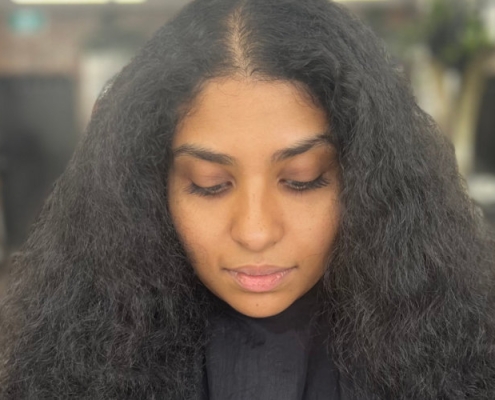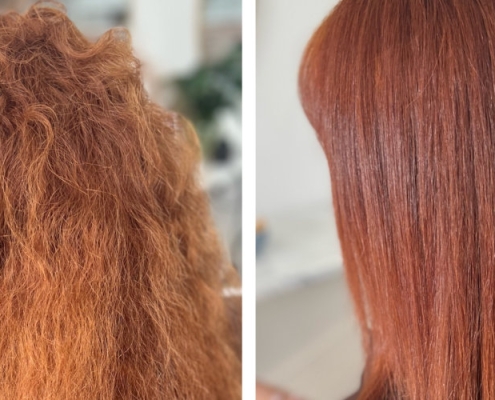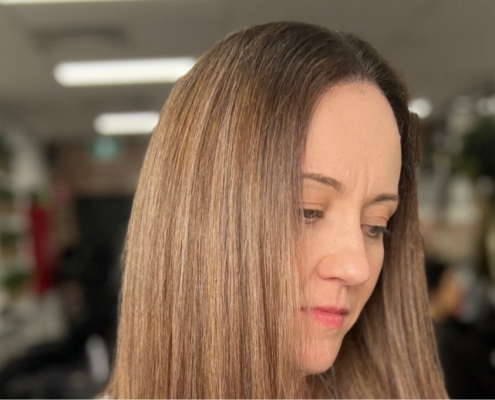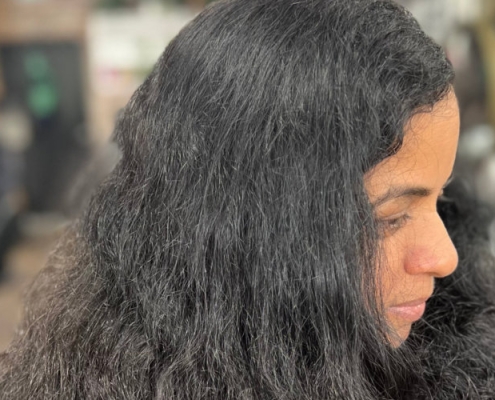Top 5 Signs Your Nanoplasty Was Done Wrong
When performed correctly, Nanoplasty can deliver beautiful, long-lasting results: smoother, softer hair with reduced frizz and easier styling. But if the treatment was rushed, poorly applied, or done by someone without proper training, the results can be disappointing – or worse, damaging.
At The Cutting Room, we often meet clients who have come to us after a Nanoplasty treatment that simply didn’t work. Their hair didn’t feel better – it felt worse. And most of the time, it’s not because Nanoplasty is a bad treatment. It’s because it was done wrong.
If you’re wondering whether your Nanoplasty was correctly applied, or you suspect something wasn’t quite right with your results, here are five of the most common red flags — and what they mean for your hair.
1. Your Hair Feels Dry, Brittle or Breaks Easily
Nanoplasty is supposed to improve the condition of your hair – not leave it worse off. If your hair feels dry, straw-like, or starts breaking off at the ends or mid-shaft, something has gone wrong. This is one of the most serious signs that the treatment was either too harsh, too hot, or simply applied incorrectly.
One of the biggest culprits here is heat misuse. During Nanoplasty, a flat iron is used to seal the treatment into the hair. If the temperature is set too high – especially for fine, coloured, or previously bleached hair – it can cause structural damage. Think of it like overcooking something on high heat: it may look fine on the surface, but inside it’s dry and fragile.
Another common issue is uneven application. If certain areas received more product or heat than others, the hair can become overprocessed in spots while remaining untreated in others. This can lead to a mix of frizzy sections and over-smoothed, damaged ones.
What this sign may indicate:
- Excessive heat during flat ironing
- Hair wasn’t assessed properly beforehand
- Low-quality or inappropriate product used
More on this in The Dangers of DIY Nanoplasty.
2. The Results Only Lasted a Few Weeks
Nanoplasty is designed to be long-lasting — up to 5 to 7 months when done correctly. If your hair returned to its frizzy or unruly state after just a few washes, that’s a strong sign that the treatment wasn’t properly applied or didn’t bond with your hair effectively.
This often happens when stylists don’t follow the correct processing time, rinse the product out too soon, or fail to seal it correctly with heat. In some cases, we’ve seen treatments washed out immediately before the active ingredients had a chance to work. The result? Hair that looks nice for a day or two, then reverts quickly.
Another possible reason for short-lived results is poor pre-treatment instructions. At The Cutting Room, we don’t clarify the hair immediately before the service, as this can irritate the scalp during processing. Instead, we advise clients to shampoo their hair 48 hours prior to their appointment and to avoid using heavy styling products in the lead-up.
If a stylist fails to provide this kind of preparation guidance — or applies Nanoplasty to hair that’s coated in buildup or oil — it can prevent the product from bonding properly, leading to results that fade quickly.
To understand more, visit Does Nanoplasty Really Last?
3. Uneven Texture or Patches in Your Hair
One of the most frustrating outcomes of a poorly done Nanoplasty is inconsistency. You might find some sections of your hair are smooth and straight, while others are still frizzy, wavy, or rough. This patchy result is often due to uneven product application or inconsistent heat sealing.
Imagine ironing a shirt and missing sections – some areas are perfectly pressed, while others are wrinkled. The same principle applies with Nanoplasty. If the stylist didn’t work methodically through the hair or applied product unevenly, you’ll be left with mixed results that are both visually and texturally off.
Another possibility is using too little product – especially on thicker or coarser hair types — leaving sections under-treated. Without proper saturation and coverage, those strands won’t absorb the smoothing formula, and the treatment won’t last in those areas.
What this sign may indicate:
- Poor sectioning and application technique
- Inadequate product used on thicker areas
- Inconsistent flat ironing
Want to avoid this next time? Read 7 Questions to Ask Before Booking Nanoplasty.
4. Your Colour Has Shifted Dramatically
While Nanoplasty is safe for coloured hair, it must be approached with care — especially for blonde or bleached hair. If your hair has taken on an unexpected brassy or warm tone after the treatment, chances are it wasn’t handled properly.
Heat and porosity play a huge role here. Bleached or lightened hair is more porous, meaning it reacts more strongly to heat. If too much heat is used, it can slightly “open” the hair’s surface and reveal warmer underlying tones – especially if no toner or colour-protective strategy was used.
This doesn’t mean your colour has been stripped – but it does mean it was altered. Think of it like heating up certain fabrics: they may not be damaged, but the sheen or tone can shift subtly based on how they respond to heat and pressure.
What this sign may indicate:
- Overuse of heat on colour-treated hair
- No pre-treatment consultation or toner plan
- Lack of product customisation for colour protection
More on this topic here: Will Nanoplasty Affect My Hair Colour?
5. You Weren’t Given Any Aftercare Advice
One of the clearest signs that your Nanoplasty wasn’t done professionally? You were sent home without any instructions on how to look after your hair. Aftercare is crucial to preserving your results – and if it wasn’t mentioned at all, it’s a red flag.
While Nanoplasty is relatively low-maintenance, your stylist should still provide tailored advice to help you maintain the results — such as using sulfate-free shampoo, minimising unnecessary heat styling, and knowing when to book your next toner or colour refresh.
While some treatments require avoiding chlorine, Nanoplasty sits deep within the hair matrix, meaning it’s generally resistant to chlorine exposure. That said, good aftercare still plays a big role in how your hair feels and looks in the weeks and months following your appointment.
Unfortunately, DIY kits and low-budget salons often skip this step entirely. You may even be told to use your regular shampoo or book a colour appointment right away – both of which can undermine the results of your treatment.
To get on track, read our full guide: Expert Aftercare Tips for Nanoplasty
Not Sure? Book a Consultation and We’ll Help
If any of the signs above sound familiar, it’s likely your Nanoplasty wasn’t performed to the standard it should have been. The good news? You don’t have to live with poor results – and you don’t need to give up on Nanoplasty entirely.
At The Cutting Room, we specialise in correcting underwhelming treatments and giving clients the results they were originally promised. We’ll assess your hair, identify what went wrong, and create a plan to restore your hair’s health and smoothness — properly this time.
Want to make sure your next experience is a success? Start by reading 7 Questions to Ask Before Booking Nanoplasty.
Ready to get your hair back on track? Book your Nanoplasty consultation with us today.











